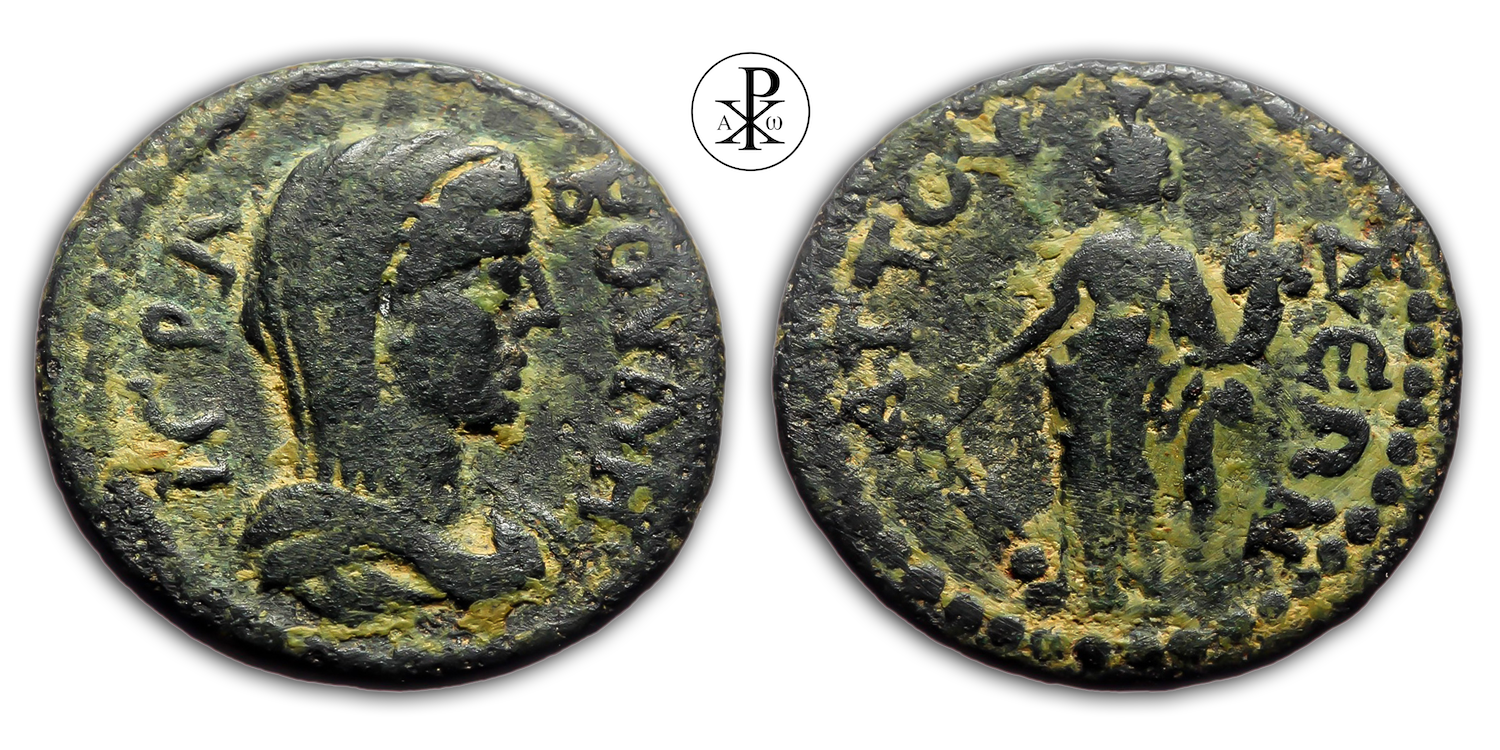Imperator Caesar Marcus Aurelius Commodus Antoninus Augustus
Reign: Pseudo-autonomous; time of Commodus
Mint: Attuda, Caria
Date: 180/192 AD
Nominal: Bronze
Material: AE
Diameter: 19mm
Weight: 3.24g
Reference: RPC IV.2 25019 (this coin)
Reference: Papillon 8, 861
RPC Online: https://rpc.ashmus.ox.ac.uk/coins/4/25019
Rare: Specimens 1 (0 in the core collections)
Provenance: Numismad Numismatics Warsaw, Poland (Auction 7, Lot 506)
Pedigree: –
Special: 2nd known example, RPC Online Plate coin, unpublished in the standard works, a new type from Attuda
Obverse: Veiled and draped bust of Boule, right
Inscription: IƐPA BOVΛH
Translation: Iɛpas Boule
Translation: Sacred [Personifikation of the] City Council
Reverse: Tyche standing left, holding rudder and cornucopia
Inscription: ΑΤΤΟΥΔƐΩΝ
Translation: Attoudeon
Translation: City of Attuda
Comment: Attuda or Attouda was a Hellenistic city in ancient Caria and later in the Roman province of Phrygia Pacatiana. The ancient city of Attouda is localised at Hisarköy of Sarayköy district in Denizli province and no systematic surveys or excavations have been carried out. As the site was registered as first degree archaeological site the contemporary village moved out and the existing architectural heritage started to deteriorate. Based on more than 300 coins compiled a typology was prepared and these coins were evaluated to gain information on ancient Attouda was retrieved. Thus, it is noted that Attouda started minting coins in the Late Hellenistic period and continued minting until mid-third century AD. The Carminii Family is dominantly attested with many titles. In addition to the magistrate names, some light was cast onto the administrative bodies and cults of the city.
On the coins, people’s assembly Demos is personified as a youthful, or bearded male head; city council Boule is depicted as a veiled female head (Martin 2013); and Synkletos, which represented the joint assembly of people and city council on certain occasions during the Classical period but came to represent the Roman Senate in the Roman Imperial period as it became a cult, particularly in the eastern provinces (Kienast, 1985; Canciani, 1994; Forni, 1994), is depicted as a youthful male head. Thus, it can be safely stated that Attouda had a Boule (City Council) and a Demos (People’s Assembly). Boule coins comprise six types attributed to the reign of Domitianus or Traianus (Type B11), to the reign of Antoninus Pius or Marcus Aurelius (Type B23), to the reign of Commodus or Septimius Severus (Type B32) and to the Severan period (Types B38, 39, 40). The legend on the obverses is Boule only (Type B38), Boule Attoudeon (Types B11, 23) or Hiera Boule (Types B32, 39, 40).
The bule or boule was the council in the cities (poleis) of ancient Greece. It was appointed in various ways and usually met in a public building called a bouleuterion at the agora. The council in Athens was particularly important. Already in the royal period of Athens there was a consultative assembly whose members were exclusively nobles. In the year 594 BC Solon carried out his famous reforms, which were at the beginning of the development to the Attic democracy and in whose consequence also the Bule was reorganized to the council of the four hundred. One hundred extinct councilors from each of the four phyla formed the council. They originally advised the people’s assembly (Ekklesia). Councils also existed in other Greek cities, usually, as in Athens, alongside a people’s assembly. Depending on how far the constitution was influenced by Attic democracy, membership lasted a certain time or for life. In the Roman imperial period, the council was usually completed again according to the oligarchic principle from former magistrates. Not everywhere the council bore the designation Bule. Thus, in many cities there was also a gerusia (roughly: „council of elders“); in Sparta, the gerusia was the only council.
On the subject of attuda and coinage, I recommend the very good and interesting publication by İnci Türkoğlu, which can also be downloaded as a PDF. You can find the publication here: Civic Coinage of Attouda in Caria
